Africans are known for their customs and norms when it comes to marriage especially the Ibibio's. They hold their traditional marriage in high esteem and believe whatever is required of it should be done.
The Ibibio are the people of south-south Nigeria and have lived in Akwa Ibom/ Cross River for over a hundred years now and marriage plays are a very significant role in the Ibibio society. There are ceremonies that take place even before the final handing over of the girl to her suitor.
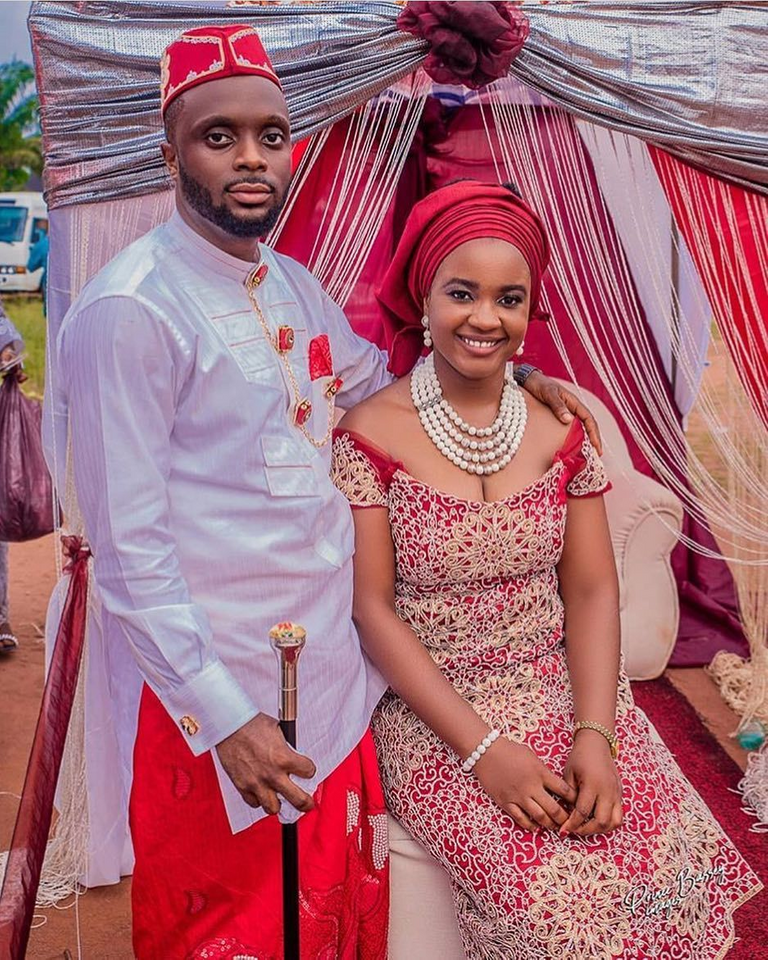
The bride price process is of various variety and before the man in question gets to pay her bride price, there are various processes they need to undergo which involves little or more traditional food for welcoming the visitors
The practices have been in existence for a long time and as such, cannot be left out in the Ibibio marriage culture.
- Ndidiong Ufok (Knowing of the house):
The practice is the first stage after the mutual agreement between the man and the woman. The groom then proceeds to visit the house of his soon-to-be the bride with a bottle of wine to inform her parents about his intention and he is accompanied by his father and two or three other men. This first process gets to determine if the father of the girl accepts or declines the proposal. If the parent of the said girl accepts the proposal of the groom, then both parties agree on a second date for another meeting.
- Nkong Udok ( Knocking of the door):
This is the second stage of the marriage where the man shows his readiness to marry the bride. It is the formal declaration of intentions, where the man visits the woman’s home again to officially ask for the lady’s hand and collect the marriage list. This stage, the groom is expected to arrive with some relatives from his family with some elderly man and in the end, both families get to familiarize themselves with each other. This stage, the bride price is also negotiated and the marriage list is drawn up and given to the groom. The date in which the items written on the marriage list will be drawn as well including the date of the traditional marriage proper. This list includes an item that will be given to the members of her family and her grandparents inclusive (paternal and maternal). The village women and youth are also going to be given items.
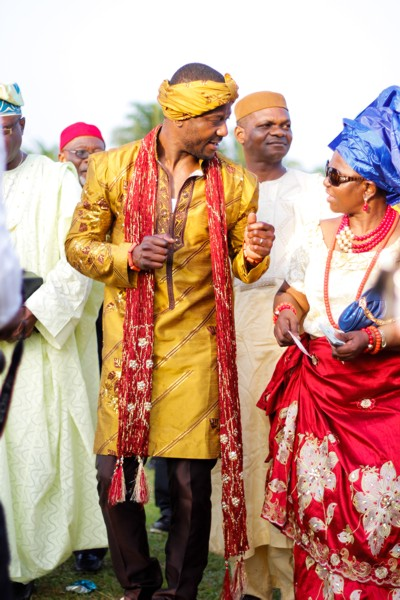
- Nno Mkpo (To give something):
This is the third stage but does not require much than to give to the bride's family gift or items requested. This is the day, the items written and given to the prospective groom is to be delivered to the family of the bride. This also serves as compensation from the family of the groom to the family of the bride for taking away a member of their family. It also serves a commitment to his request to the said family of the bride Items like a goat, yam, bags of rice, salt, box, shoes, wrappers, and the rest
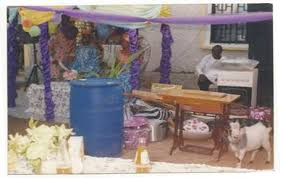
- Usoro Ndo: Marriage proper
This is the most significant part of the ceremony which is also the traditional marriage. When the groom arrives the scene of the marriage, it is mandatory that the youth and women of the villages put a wedge so as to stop the movement of the groom and demand a request from them and it is mandatory that the groom and his family or entourage meet their demand at that spot just for their free passage into the ceremony ground. The bride on the other hand is indoor preparing for her big day. She is to be dressed on the wrapper.
Udia Ibenghe: The preparatory meal
The marriage begins with a pre-event known as (Udia Ibenghe) held prior to the main event where the family of the groom is treated with the food from the bride's family. It is an indoor activity meant only for the family of the groom. Different foods are displayed on the table from Edita Iwa ye Mmansang (Tapioca and groundnuts) Eben ye Akpakpa (pear and corn), Afia efere (white soup)and pounded yam, Afang, Ekpang Nkukwo, Atama, Editan soup, and all other assorted traditional dishes.
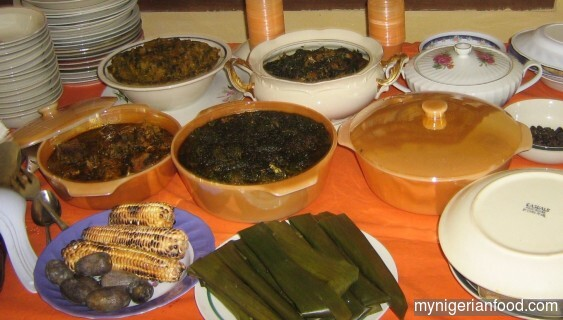
Image Source
After the eating, the groom and his entourage are ushered first into the venue with a dance song to follow their procession
Image Source

and ushered to his seat which is decorated in a traditional way.
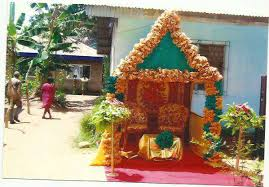
Before the bride is ushered in, the bride as to be identified through a suspense-filled search. The family of the bride makes it interesting by presenting a series of fake brides to the groom as his supposed bride which seems to be an entertaining time for the guest. In the series of presenting these fake brides, the family of the bride's family asks for transport to find the real bride. Then the bride is ushered into the venue on her full traditional attire with her maiden entourage alongside a danceable song to follow.
Image Source
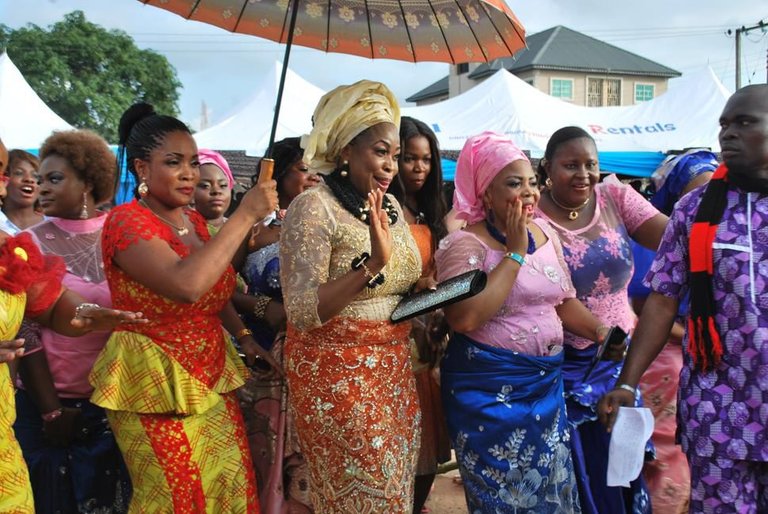
Before she goes to her seat, she goes around first, greeting everyone and the best part is when she is given a cup with a drink inside to go and bring her husband and show to everyone to know that the man belongs to her now.
Image Source
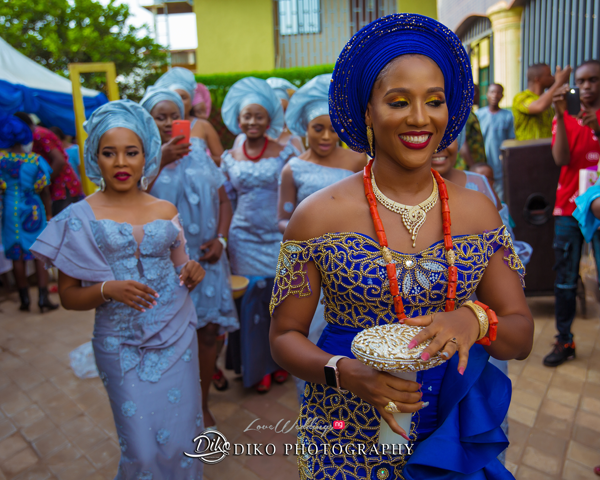
The hilarious and significant part is when the man is put to a test to of some exercise to show that his priority lies with the bride and to prove his manhood as a groom.
The church blesses their marriage and if there is a ring, the Pastor blesses the ring and gives to the couple to mark the beginning of their marriage life.
The last part is the dance between the new couples, alone and with their family members and friends which marks the end of the celebration and also the taking of pictures. The bride is expected to follow her groom and his family home because all marriage rites have been performed. But in recent times, the couple has to proceed to the church to perform the church wedding before it is consummated.
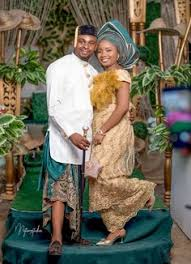
Thank you to @HiveAfrica and @project Hope for this great initiative. I hope this write up is detailed enough for your understanding.
This is the link to the contest post for whoever is interested in the contest.
https://hive.blog/hive-175254/@hiveafrica/announcing-the-hiveafrica-writing-contest-and-our-partnership-with-projecthope-community
Hello. Thanks for taking part in this contest! Best of luck
Thank you.